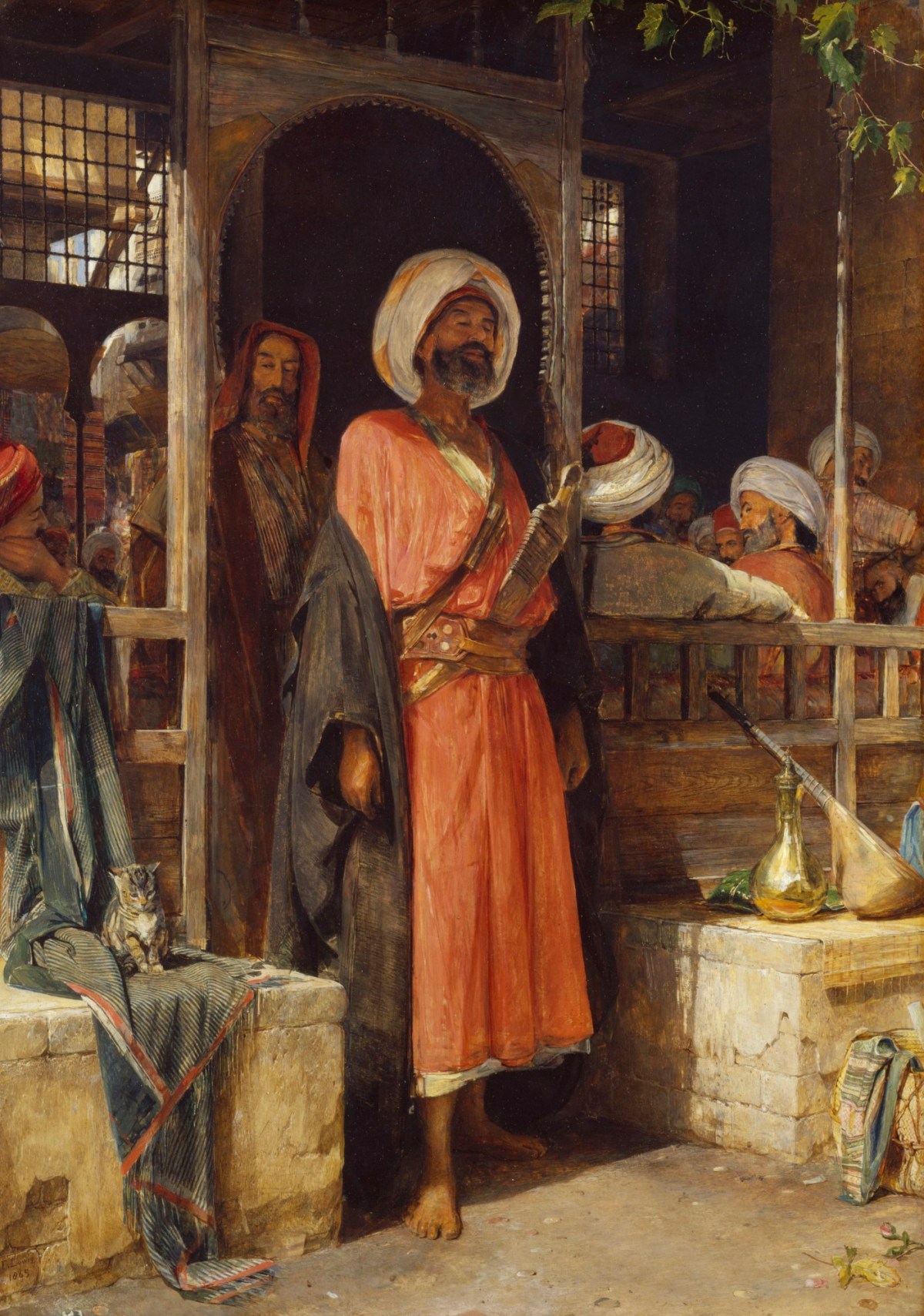
John Frederick Lewis RA, The Door of a Cafe in Cairo, 1865.
Oil on panel. 762 mm x 534 mm x 12 mm. © Photo: Royal Academy of Arts, London. Photographer: Photo Studios.
This image is not available to download. To licence this image for commercial purposes, contact our Picture Library at picturelibrary@royalacademy.org.uk
The Door of a Cafe in Cairo, 1865
John Frederick Lewis RA (1804 - 1876)
RA Collection: Art
This painting depicts the outside of a crowded café in Cairo, but the main focus of the work is a man in a long red robe coming through the doorway. This central figure is based on a portrait of Sheik Hussein of Gebel Tor that the artist made in the Sinai Desert in 1842 (now in the Yale Center for British Art). The coffee house behind Sheik Hussein is characteristic of the many cafes found across the city of Cairo in the 19th-century. These were important places for men to socialise, discuss politics and watch musical or dance performances – but women were banned from entering these coffee houses.
Lewis lived in Cairo for over a decade, adopting local dress and living a grand, luxurious life in a traditional Ottoman mansion. During this time, he made countless drawings and studies of the people, culture and scenes that he encountered on a daily basis. On his return to England in 1851, Lewis used these works to produce finished paintings in a variety of media, often making multiple versions of the same picture. For instance, there is another version of this painting but in watercolour, in the Huntingdon Library and Art Museum collection. His finished paintings were extremely popular in Victorian Britain, satisfying demand for idealised scenes of exotic lands which were fashionable at the time. This fascination with Middle Eastern culture proliferated in 19th century Britain, in a trend that has become known as ‘Orientalism’. This term was popularised by Edward Said in his 1978 book of the same name. Painters such as Lewis produced artworks that fitted into an idealised, Westernised vision of the Middle East.
Object details
762 mm x 534 mm x 12 mm




